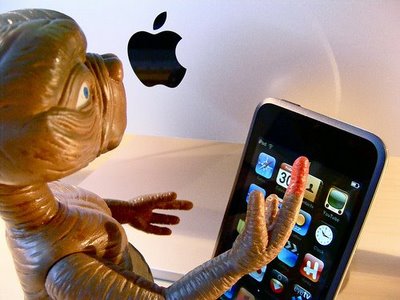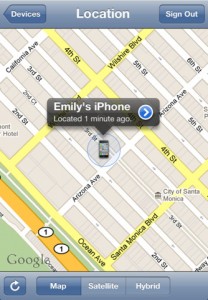ET Phone Home: Smartphones and crime prevention

Over the years, burglars have focused on Video Recorders, DVD players and, now, Flatscreen TVs. Car thieves have moved from car radios via CD players on to SatNavs, although even those are no longer of sufficient value to interest most opportunists.
In the same way, the advent of mobile phones has been responsible for a sharp increase in the number of muggings, mainly with young people as both perpetrators and victims. This particular crimewave has been revitalised over the last couple of years by the launch of expensive smartphones such as the iPhone, Samsung Galaxy etc. These, along with Tablet computers, retain very high re-sale value and are therefore very robber-friendly.
What got me thinking about this was a helpful conversation I had on the tube earlier this week with a British Transport Police Officer who was kind enough to give me a heads up about using my netbook in such a public place. He told me there had been quite a lot of laptops and iPads snatched on the underground network over the last few weeks. When you’re typing away with your eyes focused on the screen, your peripheral vision and general situational awareness is very low and you make an ideal victim. It’s pretty straightforward for a bunch of ne’er-do-wells to snatch your prized possession out of your hands just before the doors close.
I’ve posted before on this blog on how technology and the advent of social media have been swiftly adopted and adapted both by police services and the criminals they seek to apprehend.
The Fingerprint Branch at New Scotland Yard was created in July 1901 using the Henry System of Fingerprint Classification and it wasn’t long before burglars started wearing gloves. More recently, last August’s rioters outflanked police by their use of the Blackberry Messaging Service whilst police routinely use Facebook to investigate criminal connections and track down those wanted for questioning.
Just as police and criminals adapt, so do technology manufacturers. My British Transport friend told me that he and his colleagues had recently come to the aid of a furious and distraught passenger who had had his iPhone snatched a few stops further down the line. Using the officer’s own iPhone they logged into the victim’s iTunes account and located his phone via the “Find my iPhone” app which he had installed for free.
Sure enough, when they visited the address an hour later, they were able to both recover the phone and make an arrest.
“Find my iPhone” also allows users to remotely lock the phone or wipe it’s data.

I’m hoping that the iPhone5 will take technological crime prevention to the next level.
I’m expecting it to scan any new user’s retina to confirm it has been stolen, and then report the crime itself (by e-mail, text or Twitter), complete with a photo of the thief and current GPS details.


